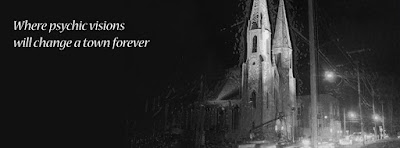By Jorge Jefferds December 11, 2015
When we think of nature in a city like Bucharest, we always look forward to visiting castles like the one owned by Count Dracula. This time, however, the idea is to enjoy the Christmas breeze that dominates this lovely city, and there are three famous natural spots where the visit is a must.
 |
| A Sunny Day in Carol Park |
Also named Liberty Park, it is a public attraction in Bucharest, Romania, named after King Carol I of Romania. A French garden located in the southern-central area of Bucharest, partly on Filaret hill, originally capable of hosting various exhibitions, it suffered considerable modifications during the communist regime, including a name change. Aside from its beautiful vegetation and panoramic views, the park also includes several monuments, such as a Mausoleum, the Cantacuzino Fountain (built in 1870), another fountain Fântâna Minelor și Carierelor (1906), the Giants' Statues, the Zodiac Fountain (1934), the Technical Museum (first opened in 1909), a monument in the shape of a small mosque built in 1923 as a sign of reconciliation. Also in the park are the open-air Roman Arena, and the Astronomical Institute of the Romanian Academy.
 |
| The Mausoleum |
This is a large park situated on the northern side of Bucharest, Romania, around Lake Herăstrău, one of the lakes formed by the Colentina River. Initially, the area was full of marshes, but these were drained between 1930 and 1935, and the park had to be re-opened in 1936. The park is divided into two zones: a rustic or natural zone (the Village Museum), which is left more or less undisturbed, and a public active domain with open areas for recreation activities. Small boats are allowed on the lake. Several buildings are found within the Herăstrău Park. The most notable is the Dimitrie Gusti National Village Museum, an open-air exhibition center showcasing traditional life of the Romanian peasant and having hundreds of houses from across Romania. Scattered across the park are an outdoor theater, a yacht club, a sports club, the Herăstrău Hotel and, adjunct to the park, the Diplomatic Club, featuring a golf course.
 |
| Boating in the Herastrau Park |
They are a public park near the city center, spanning areas on all sides of an artificial lake. The gardens' creation was an important moment in the history of Bucharest. They form the oldest and, at 17 hectares (42 acres), the largest park in the central area. The main entrance is from Regina Elisabeta Boulevard, in front of the City Hall. There is another major entrance at the Știrbei Vodă Street, near the Crețulescu Palace. The southwestern corner of the park is adjacent to the Gheorghe Lazăr High School. The Rondul Român ("Romanian Round") or Rotonda Scriitorilor ("Writers' Rotunda") is a circular alley which has stone busts of twelve important Romanian writers: Mihai Eminescu, Alexandru Odobescu, Titu Maiorescu, Ion Luca Caragiale, George Coșbuc, Ștefan Octavian Iosif, Ion Creangă, Alexandru Vlahuță, Duiliu Zamfirescu, Bogdan Petriceicu Hasdeu, Nicolae Bălcescu and Vasile Alecsandri.
 |
| The Rondul Roman |
Monumentul Eroilor Francezi ("The Monument of French Heroes") commemorates French soldiers who died fighting during the World War I Romanian Campaign. Made in Carrara marble the French monument was created by the Romanian sculptor Ion Jalea and was inaugurated at 25 October 1922. The sculptural work Izvorul Sissi Stefanidi, was created by Ioan C. Dimitriu Bârlad (1890–1964), and it depicts a mother, aggrieved by the death of her daughter, pouring water from a pitcher. Monumentul Eroilor Americani ("The Monument of American Heroes") commemorates the 378 US soldiers who died in Romania during World War II. The granite sculpture is the work of the artist Remus Botarro and it was officially inaugurated in 2002 by the Romanian Government and the American Embassy in Bucharest. Other statues located in Cișmigiu are the one of journalist George Panu sculpted by Gheorghe Horvath and of writer and women's rights activist Maica Smara (1854–1944), sculpted by Mihai Onofrei.
 |
| The Zodiac Fountain |
At first the statues were located before the Arts Palace and of the artificial cave in front of it. The grotto was called "The Giants' Grotto"or "The Enchanted Grotto", as it was watched over by the two giants and a Sleeping beauty. The three statues showed the characters of a legend where twins, in love with the same woman, were turned into stone due to their unrequited love, while the object of their love became a waterfall. At that time, the giants were displayed one before the other, with the sleeping beauty lying down in the middle.



























